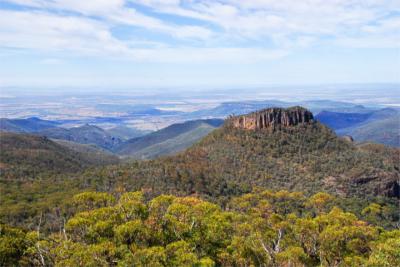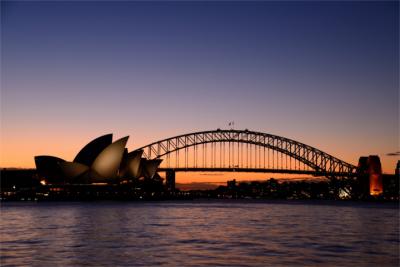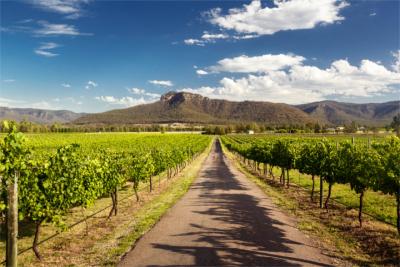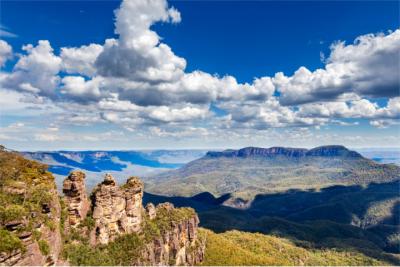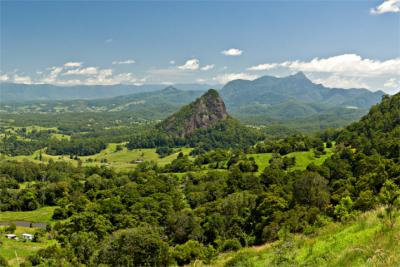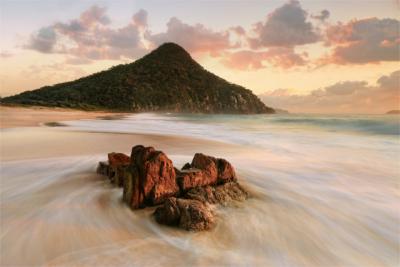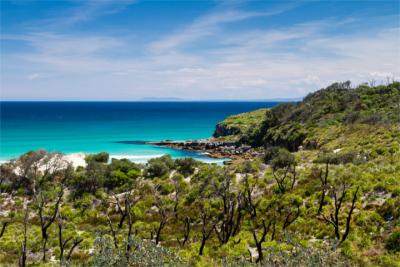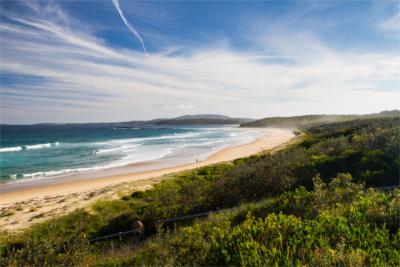Travel Offers
Travelmyne Featureprint
Distance
New South Wales - Australia's Impressive Diversity
New South Wales has everything the Australian continent has to offer: wonderful sandy beaches, thick rainforests as well as barren desert, mountainous and steppe landscapes. In addition, it contains one of the best-known big cities in the world - the cultural metropolis of Sydney.
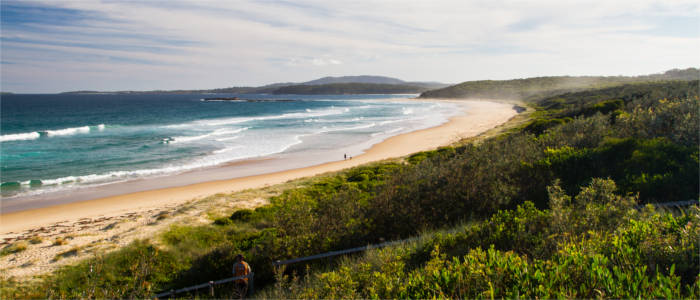
Geography - The most populous state in Australia
New South Wales (NSW) is a state in the south-east of Australia, which has an area of 800,642 km². With about 7.5 million inhabitants (approximately a third of Australia's population), it is the most populous state in the country, which borders on Queensland in the north, Victoria in the south and South Australia in the west. In the south-east, you find the enclave of the Australian Capital Territory with Australia's capital of Canberra. The capital of New South Wales is the world-famous metropolis of Sydney. Prominent geographical locations are the flat and dry plains in the west, the coastal mountains of the Great Dividing Range with the Blue Mountains as well as the Australian Alps with the region's highest peak Mount Kosciuszko (2,228 m). The state's coast, which is 1,400 kilometres long and consists of the South Coast, the North Coast and the Central Coast, is another distinctive geographical feature. The climate in New South Wales differs from region to region. While the climate is subtropical in the north, it is warm temperate in the south. Precipitation decreases considerably from the coast towards the heartland, while the temperatures rise, creating a dry and sparsely vegetated landscape.
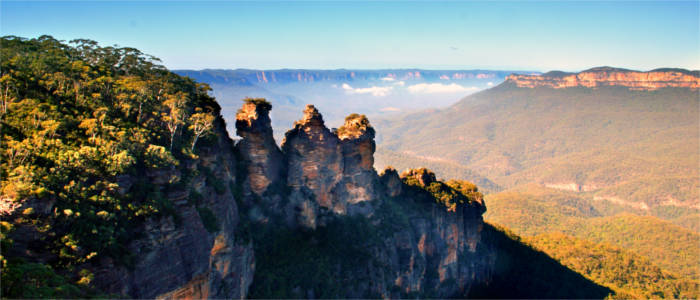
Nature - The greatest natural diversity on the Australian continent
The state of New South Wales is one of the most varied regions on the Australian continent. It contains both dry desert areas and subtropical beaches and rainforests. In addition, you see vast pastures, grassy steppes and shrubland as well as snowy mountainous regions. Members of New South Wales' flora are eucalyptus forests, toothbrush trees and heather, while animals such as koala bears, kangaroos, eagles, lizards, whales and dolphins are part of its fauna. Travellers can explore impressive natural spectacles in numerous national parks and nature reserves. In the southern Kosciuszko National Park, you can experience the Australian Alps or the Snowy Mountains in all their glory. The Blue Mountains National Park presents a different side of the Great Dividing Range. It accommodates the famous rock formation of the Three Sisters and has been part of the UNESCO World Natural Heritage since 2000. Other Natural Heritage sites are Lord Howe Island and the Willandra Lakes Region. The latter has an area of about 2,400 km² and accommodates 17 dried-out lakes. One of them is Lake Mungo in the Mungo National Park, which is significant because of its thousand-year-old fossils. The spectacular lake is characterised by a prehistoric landscape with bizarre sand formations (Walls of China) and white sand dunes, which create a romantic scene at sunset.
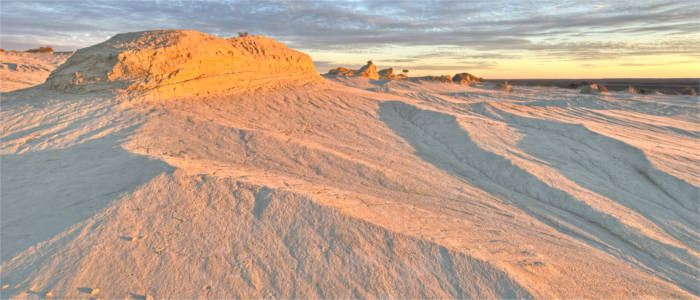
Culture - Australia's oldest state
New South Wales is the oldest state on the Australian continent. In 1770, the English sailor Captain James Cook discovered the region. The first European fleet arrived in 1788. Convicts and their guards were given the task of founding an English colony, which originally extended over the whole east of the continent and was only divided into states in the course of years. New South Wales' present-day capital of Sydney is one of the most significant metropolises on earth. The port city accommodates the Sydney Opera House, which is one of the most famous buildings in the world as well as one of Australia's most important landmarks. It was declared a UNESCO World Cultural Heritage site in 2007. The Harbour Bridge, which is also called the "coat hanger" by the natives, the old town (The Rocks) as well as the Botanic and the Chinese Garden are other cultural highlights in Sydney. Another World Cultural Heritage site in New South Wales is the Willandra Lakes Region, where the unique fossils of the Mungo Man and the Mungo Lady were found. The skeletons of the two native inhabitants are about 40,000 years old, which makes them two of the oldest remains of homo sapiens. Near the Willandra Lakes Region, you find the city of Broken Hill, which is known as the capital of the local outback and is home to many artists and art galleries.

Experience - Wine tasting in the Hunter Valley and partying in Sydney
Travellers should not miss out on the nightlife in Australia's biggest city. Sydney is vibrant with activity and its many clubs and discos invite visitors to party. The numerous bars and pubs are very popular with both the tourists and the locals. You can enjoy the evening in a relaxing atmosphere, while listening to melodious live music. Besides the world-famous metropolis of Sydney and its cultural sights and nightlife, many travellers are drawn to the Hunter Valley, the country's oldest and most significant wine-growing region. Numerous wine cellars invite holidaymakers to wine tastings and expeditions. Travellers can enjoy the relaxing atmosphere of the fascinating wine-growing region in extraordinary accommodation such as an age-old monastery.
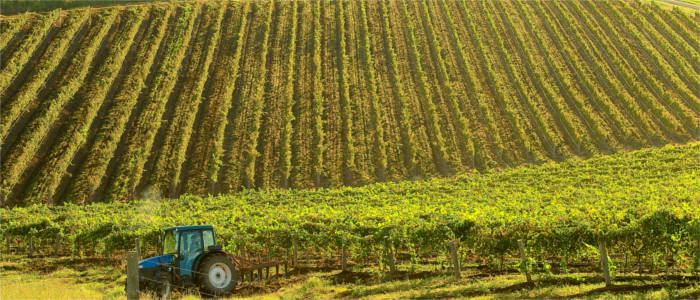
Activities - Water sports in Byron Bay and skiing in the Snowy Mountains
New South Wales offers a variety of leisure and sporting activities, which leave no room for boredom. While travellers can do water sports such as surfing, sailing, swimming and diving at the magical beaches, the Australian Alps offer excellent conditions for hikes. Other popular activities in the region are deep sea fishing, horseback riding, golfing, canoeing, kayaking, parachuting and parasailing. In winter (June to October), you can do winter sports in the Snowy Mountains.

Information
The best time for exploring New South Wales' coast are the months of summer, spring and autumn (September to May). It is pleasantly warm rather than really hot in spring (September to November) and autumn (March to May). Holidaymakers who want to do winter sports should come to New South Wales in winter (June to August).
Due to its diversity, New South Wales is a great destination for all travellers who want to experience Australia in all its glory. Besides the varied nature, it is the wide range of leisure activities and famous metropolises like Sydney which capture many visitors every year.

